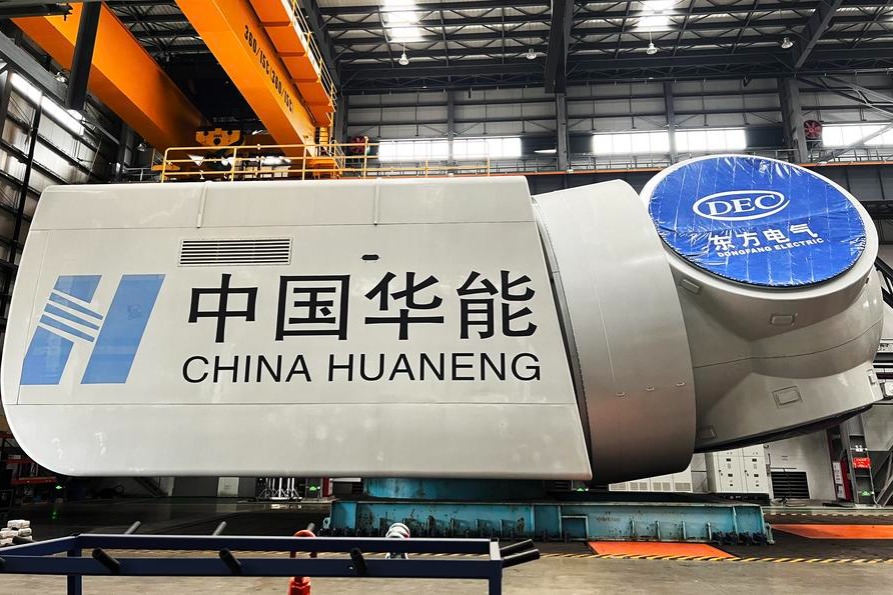Supply expansion, research can spur rental housing


Long-term rental homes — an important factor in addressing the housing problem in large cities — have gained solid ground for development in China, thanks to several rounds of innovation and improvement in policy measures. However, the setbacks that once plagued the rental market should not be forgotten. To achieve a sustainable and healthy development of the long-term rental housing market, in-depth research is still necessary, as the sector plays a significant role in boosting the national economy and ensuring livelihood.
In this case, expanding effective supply should be given priority. With demand from various rental housing categories, such as long-term assignment, short-term employment, schooling and eldercare, varying, the most effective way to meet such a diversified demand structure is to go large-scale.
Unlike the past when scattered individual supply was the mainstay, establishing the rental housing system under centralized institutional management should be the main source of supply, as this can greatly improve rental quality and supply stability.
The key should be to have more "rent-only "buildings — that is, expanding rental housing projects. All localities should include new rental housing in their housing development plans, draw blueprints for the scale of rental housing construction and accordingly provide policy support.
For example, at the land policy level, the government can increase effective supply by releasing land earmarked for rental housing. There are three main ways of developing and building rental housing — collective construction land, competitive self-owned land, and R4 land (four types of residential land).
In fact, since 2016, there has been a continuous increase in new rental housing projects along with greater land supply. As a result, large-scale rental communities have become one of the important suppliers of long-term rental housing. According to incomplete statistics, 22 key cities provided land supporting rental housing last year, where a total of 285 leased land plots were recorded.
With such efforts on the up, a number of model projects nationwide have provided valuable experience in adjusting the supply and demand structure and alleviating pressure from leasing.
However, due to different characteristics of each land type and difficulties in the construction and operation of long-term rental housing projects, there are still some pain points in expanding land use for new rental projects. For example, enterprises are faced with high costs while acquiring competitive self-sustaining land, and the returns are relatively low.
Apart from new buildings, it is also worth focusing on existing assets. The government can look at the idle and inefficient properties nationwide, as they can be changed into long-term rental housing.
Existing properties are usually located in downtown areas that boast convenient transportation as well as good business and public services. Developing such properties into long-term rental housing can help meet requirements for work-life balance and will be popular among renters.
Gladly, some local governments have already moved forward in this direction.
Beijing issued a guideline last year to transform existing houses to government-subsidized rental housing in key urban areas and those around urban rail stations, which not only conforms to the basic logic of urban renewal, but also ensures the basic rental needs of citizens, especially young job seekers, and improves urban service level.
According to the local statistics body, as of the end of 2022, there were around 72,000 sets (rooms) of institutionally managed rental housing in the national capital, of which 88.3 percent have been renovated from existing houses, with the charter model being the most prevalent.
Apart from the land, strong and diversified financial resources are also key to the sustainable development of a long-term rental housing market.
A main reason why centralized long-term rental housing was not fully developed in China in the past was due to the lack of long-term financial support, and developers could only achieve high capital turnover through sales.
But the situation is different now, as financial support for long-term rental housing has grown stronger. Last year, the market embraced the first batch of public offerings of government-subsidized rental housing REITs (real estate investment trusts).
Also, on Feb 24, the People's Bank of China, the country's central bank, and the former China Banking and Insurance Regulatory Commission drafted another guideline to enhance financial support for the development of the housing rental market, which involves a full range of effective financial instruments.
It's good to see the progress of REITs, but there are also some hard nuts to crack.
For example, since the acquired or renovated projects are the underlying asset to be guaranteed, the key issues worth paying attention to include the impact of a short remaining term on their valuation, and a high acquisition cost.
Therefore, it is necessary to maintain patience and focus under the current circumstances, and continue to accumulate experience to find better solutions.
Last but not least, establishing industry standards is crucial to promoting the healthy development of the industry.
Clear industry standards, together with an apartment rating system, will be beneficial to the development of business areas, including asset management, M&A (merger and acquisition) deals and asset securitization, in the housing leasing industry. It will also provide a reference point for operators in apartment rent pricing and marketing, function as an important basis for tenants to choose apartments, and provide a guidepost for investors when they carry out asset acquisition and securitization.
The United States, for example, adopted a graded method in its rental apartments to guide all market participants by standardizing the housing supply at different levels.
It is an essential move to establish evaluation standards and mechanisms such as product grading and filing mechanisms and enterprise brand value evaluation in the industry, as this can promote the development of supply chain enterprises and systemic service providers, help the professional division of labor and lay a solid operational foundation for the development of asset securitization.
Besides, the establishment of such a system will guide long-term rental enterprises to achieve brand operation, refined management and standardized services, and help them evolve more diversified, higher-quality and targeted rental products.
Government units can also have a better idea of the actual operational status of long-term rental enterprises by putting long-term stable core data under close watch, such as those related to average rent and occupancy rate — as these reflect the operator's operational capacity and efficiency, as well as the advantages and disadvantages of the underlying assets — and then provide targeted support for investment by financial institutions, to achieve sustainable development of the long-term rental housing market.
The writer is a senior researcher at the National Academy of Development and Strategy, a think tank of the Renmin University of China.
The views don't necessarily reflect those of China Daily.




































